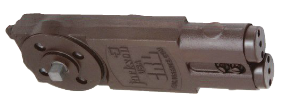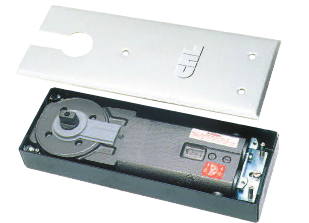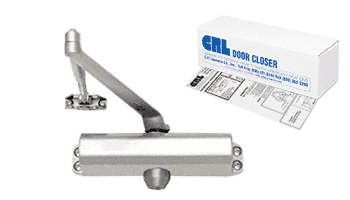Door Closer Types: A look at the various types available
Door closers are widely used for commercial applications, and suitable for light, medium and heavy traffic environments. Types of Door Closers include:
- Overhead concealed
- Surface-mounted concealed
- Floor mounted closers

Overhead concealed door closers are installed in the recesses of the door and frame, and therefore not visible when the door is closed. They may be spring-operated or hydraulic. They are commonly used with storefront application.

Floor mounted door closers are mounted in the floor and hidden from view. These door closer types are popularly used in glass storefront doors. The bar inside the closer is positioned into the underside of the door, and responsible for the closing action.

Surface-mounted door closers are an economical option available in a range of colors to match the appearance of the door. They are fitted to the door frame, and the bar is positioned along the back of the door.

Once the proper closer type has been selected, there are some important decisions that need to be made regarding the spring size, grade and desired options and features. Is the door located on the outside or inside? What type of locking device will be sued? What type of weather seals and internal building pressures will the closer need to overcome to close the door? The wider and heavier the door, the larger the spring size required to control the door. Remember, it is called a door “closer”, so therefore you are attempting to control and close the door, yet allow a reasonable force required to control the door. Closers are rated by spring size, commonly expressed as Size 1,2,3 and up through size 6. Most closers are of a fixed single size that cannot be altered, and are made to be used for a specific range of door sizes. More and more common today are closers that allow the spring size to be adjusted to the precise opening and closing force required to control the door under varying conditions, and cover a wide range of door sizes and applications. These adjustable closers allow you the best opportunity to meet your customer’s needs.
Always remember that whatever the Door Closer type, it should never be used as a doorstop. An auxiliary doorstop is always recommended when a positive stop is required to prevent the door from opening beyond a specified point. Regardless of which door closer is selected, take the time to review the instructions and learn the proper procedure to install and adjust it.